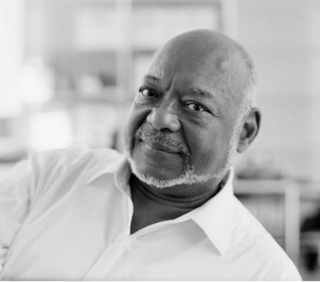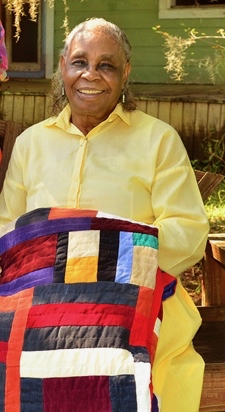Related Research Articles

Degenerate art was a term adopted in the 1920s by the Nazi Party in Germany to describe modern art. During the dictatorship of Adolf Hitler, German modernist art, including many works of internationally renowned artists, was removed from state-owned museums and banned in Nazi Germany on the grounds that such art was an "insult to German feeling", un-German, Freemasonic, Jewish, or Communist in nature. Those identified as degenerate artists were subjected to sanctions that included being dismissed from teaching positions, being forbidden to exhibit or to sell their art, and in some cases being forbidden to produce art.

Helen Frankenthaler was an American abstract expressionist painter. She was a major contributor to the history of postwar American painting. Having exhibited her work for over six decades, she spanned several generations of abstract painters while continuing to produce vital and ever-changing new work. Frankenthaler began exhibiting her large-scale abstract expressionist paintings in contemporary museums and galleries in the early 1950s. She was included in the 1964 Post-Painterly Abstraction exhibition curated by Clement Greenberg that introduced a newer generation of abstract painting that came to be known as color field. Born in Manhattan, she was influenced by Greenberg, Hans Hofmann, and Jackson Pollock's paintings. Her work has been the subject of several retrospective exhibitions, including a 1989 retrospective at the Museum of Modern Art in New York City, and been exhibited worldwide since the 1950s. In 2001, she was awarded the National Medal of Arts.

Judy Chicago is an American feminist artist, art educator, and writer known for her large collaborative art installation pieces about birth and creation images, which examine the role of women in history and culture. During the 1970s, Chicago founded the first feminist art program in the United States at California State University, Fresno which acted as a catalyst for feminist art and art education during the 1970s. Her inclusion in hundreds of publications in various areas of the world showcases her influence in the worldwide art community. Additionally, many of her books have been published in other countries, making her work more accessible to international readers. Chicago's work incorporates a variety of artistic skills, such as needlework, counterbalanced with skills such as welding and pyrotechnics. Chicago's most well known work is The Dinner Party, which is permanently installed in the Elizabeth A. Sackler Center for Feminist Art at the Brooklyn Museum. The Dinner Party celebrates the accomplishments of women throughout history and is widely regarded as the first epic feminist artwork. Other notable art projects by Chicago include International Honor Quilt, Birth Project, Powerplay, and The Holocaust Project. She is represented by Jessica Silverman gallery.

The Whitney Biennial is a biennial exhibition of contemporary American organized by the Whitney Museum of American Art in New York City, United States. The event began as an annual exhibition in 1932; the first biennial was in 1973. It is considered the longest-running and most important survey of contemporary art in the United States. The Biennial helped bring artists like Georgia O'Keeffe, Jackson Pollock, and Jeff Koons, among others, to prominence.

The Philadelphia Ten, also known as The Ten, was a group of American female artists who exhibited together from 1917 to 1945. The group, eventually numbering 30 painters and sculptors, exhibited annually in Philadelphia and later had traveling exhibitions at museums throughout the East Coast and the Midwest.

Patricia Olson is an American graphic designer, painter, feminist artist, and educator whose works are categorized as figurative art. Olson was born and raised in Minneapolis, Minnesota. She earned her B.A. in studio art from Macalester College in 1973, and her M.F.A. in Visual Studies from the Minneapolis College of Art and Design in 1998. Olson's work has been on exhibition continuously throughout the United States since 1973, sometimes in group exhibitions, and sometimes in solo exhibitions. She has works that are part of permanent collections throughout the United States as well.

The feminist art movement in the United States began in the early 1970s and sought to promote the study, creation, understanding and promotion of women's art. First-generation feminist artists include Judy Chicago, Miriam Schapiro, Suzanne Lacy, Judith Bernstein, Sheila de Bretteville, Mary Beth Edelson, Carolee Schneeman, Rachel Rosenthal, and many other women. They were part of the Feminist art movement in the United States in the early 1970s to develop feminist writing and art. The movement spread quickly through museum protests in both New York and Los Angeles, via an early network called W.E.B. that disseminated news of feminist art activities from 1971 to 1973 in a nationally circulated newsletter, and at conferences such as the West Coast Women's Artists Conference held at California Institute of the Arts and the Conference of Women in the Visual Arts, at the Corcoran School of Art in Washington, D.C..
The Art Workers' Coalition (AWC) was an open coalition of artists, filmmakers, writers, critics, and museum staff that formed in New York City in January 1969. Its principal aim was to pressure the city's museums – notably the Museum of Modern Art – into implementing economic and political reforms. These included a more open and less exclusive exhibition policy concerning the artists they exhibited and promoted: the absence of women artists and artists of color was a principal issue of contention, which led to the formation of Women Artists in Revolution (WAR) in 1969. The coalition successfully pressured the MoMA and other museums into implementing a free admission day that still exists in certain museums to this day. It also pressured and picketed museums into taking a moral stance on the Vietnam War which resulted in its famous My Lai poster And babies, one of the most important works of political art of the early 1970s. The poster was displayed during demonstrations in front of Pablo Picasso′s Guernica at the MoMA in 1970.

Irene Lieblich was a Polish-born artist and Holocaust survivor noted for illustrating the books of Nobel laureate Isaac Bashevis Singer and for her paintings highlighting Jewish life and culture. She is also a distant cousin of noted Yiddish language author and playwright Isaac Leib Peretz.

The American Jewish Museum, or AJM, is a contemporary Jewish art museum located in Pittsburgh, Pennsylvania. A department of the Jewish Community Center (JCC) of Greater Pittsburgh, the museum is located in the Squirrel Hill JCC at the corner Forbes Avenue and Murray Avenue, in the heart of Pittsburgh's historically Jewish neighborhood. The museum was founded in 1998, and though it does not have a permanent collection, it hosts several original and traveling exhibitions each year. The AJM aims to explore contemporary Jewish issues through art and related programs that facilitate intercultural dialogue.

Glitch art is an art movement centering around the practice of using digital or analog errors, more so glitches, for aesthetic purposes by either corrupting digital data or physically manipulating electronic devices. It has been also regarded as an increasing trend in new media art, with it retroactively being described as developing over the course of the 20th century onward.

Álvaro Zardoni is a Mexican sculptor and architect of Italian descent who has been a member of the Salón de la Plástica Mexicana since 2006. Although he studied painting and drawing in the 1970s and 1980s, he is a self-taught sculptor who began showing his work regularly in 2000. Since then, he has had over thirty individual exhibitions, twenty private showings and his work has appeared in over 100 collective exhibitions. He specializes in small bronze sculptures which focus on the human face, which is almost always male, expressing something emotional and/or psychological. Objects, often common, are added to the piece to reinforce the main theme of the work, for example the addition of coins on the foreheads of pieces of the Cyclops collection.

The tART Collective was an intersectional feminist and anti-racist art collective in New York City. Founded in 2004 and was running until January 2020 when the group announced its decision to end tART Collective, the group was the longest-running feminist art collective in the city. This group was created to help show support towards feminist content artists. During the years that tART was active, membership rose to two dozen members locally and internationally, and the collective served as a post-graduate plan for artists.
Jewish Painters of Montreal refers to a group of artists who depicted the social realism of Montreal during the 1930s and 1940s. First used by the media to describe participants of the annual YMHA-YWHA art exhibition, the term was popularized in the 1980s as the artists were exhibited collectively in public galleries across Canada. In 2009 the Musée national des beaux-arts du Québec mounted a touring exhibition Jewish Painters of Montreal: A Witness to Their Time, 1930–1948, which renewed interest in the group in Montreal, Toronto, and Vancouver.
The Women's International Art Club, briefly known as the Paris International Art Club, was founded in Paris in 1900. The club was intended to "promote contacts between women artists of all nations and to arrange exhibitions of their work", and until it dissolved in 1976 it provided a way for women to exhibit their art work. The first exhibition of the club was held in Paris in 1900, and another at the Grafton Galleries in London in the same year. Members of the club included Elisabeth Frink, Gwen John and Orovida Pissarro.
Women's Art Resources of Minnesota (WARM) is a women's art organization based in the U.S. state of Minnesota. It was founded in 1976 as Women's Art Registry of Minnesota, a feminist artist collective. The organization ran the influential WARM Gallery in downtown Minneapolis from 1976 to 1991.

Kynaston Leigh Gerard McShine was a Trinidadian born curator and public speaker. His visions about contemporary art made lasting contributions to the lives of countless artists and colleagues at the Museum of Modern Art in New York City where he worked from 1959 to 2008. He is said to be the first curator of color at a major American museum and at his retirement he had risen to the position of chief curator at large of painting and sculpture.
Leah Golberstein is a paper, fiber, and installation artist residing in Minneapolis, Minnesota. She was a faculty member at the Minneapolis College of Art and Design for 10 years and was a founder of the Form + Content Gallery.

Mary Lee Bendolph is an American quilt maker of the Gee's Bend Collective from Gee's Bend (Boykin), Alabama. Her work has been influential on subsequent quilters and artists and her quilts have been exhibited in museums and galleries around the country. Bendolph uses fabric from used clothing for quilting in appreciation of the "love and spirit" with old cloth. Bendolph has spent her life in Gee's Bend and has had work featured in the Philadelphia Museum of Art as well as the Minneapolis Institute of Art in Minnesota.

Susie M. Barstow was an American painter associated with the Hudson River School who was known for her luminous landscapes.
References
- ↑ Bryan, Erin Elliott (July 15, 2010). "Picture book helps women picture getting older". J.
- ↑ "About the Circle". Jewish Women Artists' Circle. Retrieved 22 March 2015.
- ↑ Harvey, Kay (September 17, 2008). "Artists' exhibit has soul – and a message of healing". MinnPost.
- ↑ Rubenstein, Doris (November 10, 2010). "Basilica art show highlights tikkun olam". American Jewish World.